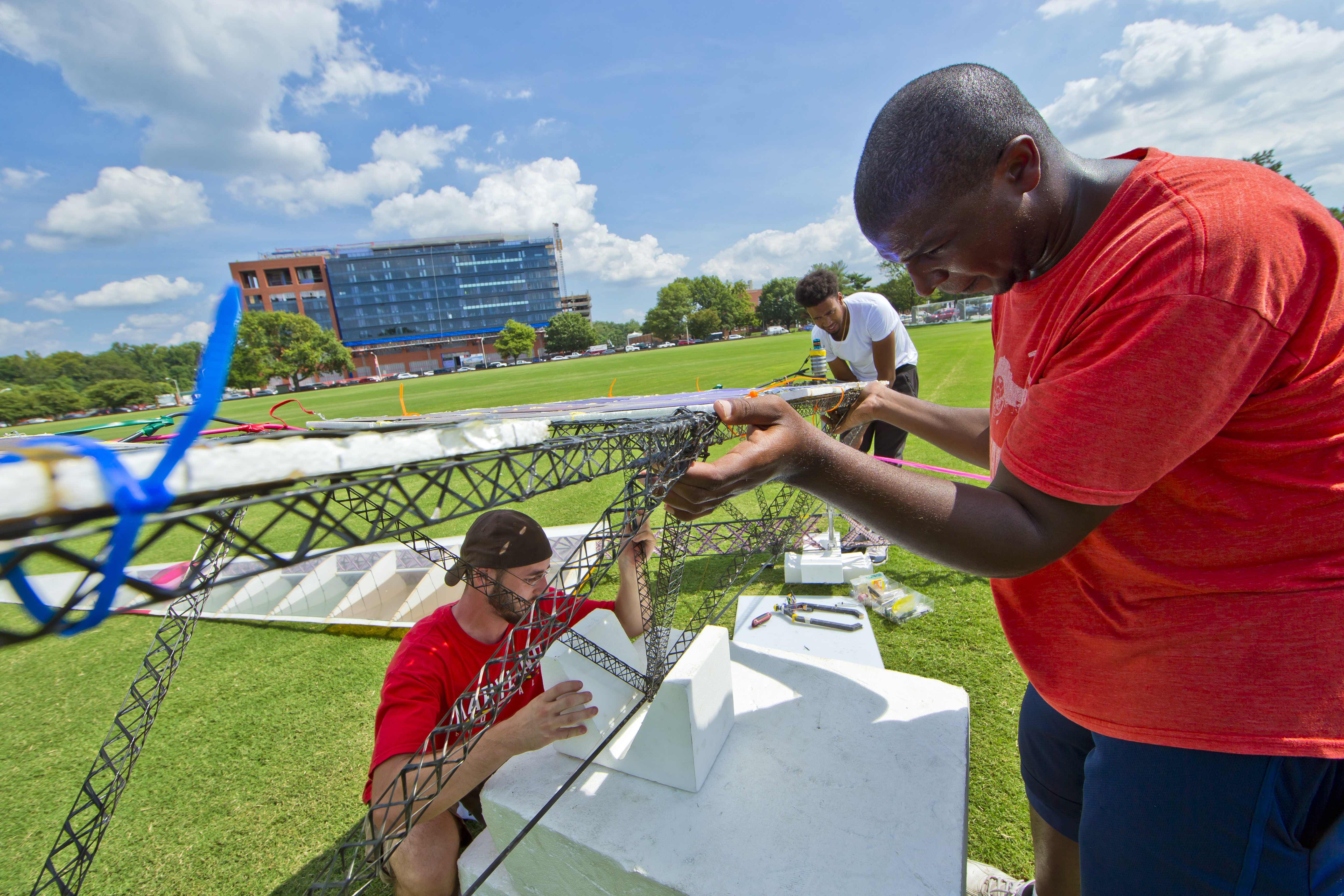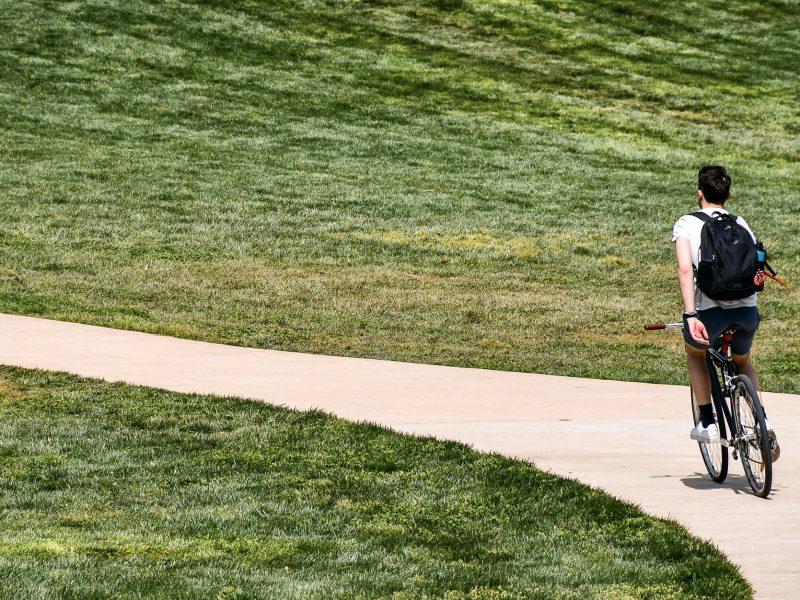By Evan Kean
For The Diamondback
Hundreds of hours of research, design and construction, and it all led up to nine seconds.
A team of University of Maryland engineering students built a completely solar-powered helicopter with a pilot. Its inaugural flight on Aug. 26, which lasted nine consecutive seconds, marks the first time in aviation history a piloted rotor aircraft has flown strictly using solar power.
“We were just hoping it would get off the ground,” said senior materials science major Michelle Mahon, the pilot of the helicopter. “When it rose off the ground, I could feel a little bit of weightlessness, and I was just thinking, ‘Wow, we’re actually flying this.'”
The project has its roots in the Gamera, a helicopter built by university students in 2012 as an entry into the Sikorsky Challenge, a competition that tasks people with building a human-powered helicopter that hovers for 60 seconds and at above three meters.
Although the Gamera fell short of the prize’s requirements, the team behind it didn’t stop. They made improvements, and in 2013, set records for human-powered rotary flight.
William Staruk, a doctoral student studying aerospace engineering, was a member of the original team.
“When the competition ended, we had nothing else to do with the vehicle,” Staruk said. “We needed a new challenge to take on. Then we realized that a piloted, solar-powered helicopter had never been done before, and we thought if there’s anyone that can do it, it’s us.”
Changing the Gamera from muscle power to solar power required a new team. Some members of the original group, like Staruk, stuck around to serve as mentors.
With this project, there was no Sikorsky Challenge, or award for finishing in first.
And this time, the team wasn’t trying to see if they could fly the highest or the longest — they were trying to see if they could fly at all.
“The project was a lot of trial and error,” Mahon said. “First, we had to test if the solar cells would even produce enough power to lift us off the ground. Because it’s such a unique vehicle, you can’t just go out and buy parts off the shelf. Each piece had to fit our exact specifications, while still being lightweight.”
Team members said they see this as not just an innovation in aviation, but in sustainable aviation.
Senior Scott Jordan, an aerospace engineering major and the leader of the team, said solar-powered helicopters won’t become a new travel craze anytime soon. But the project demonstrates just how much room for innovation exists in the aerospace world.
“Going forward, we want to do at least one more flight and really see how long we can go. That’s the immediate goal,” Jordan said. “We could even take what we’ve learned and go back to the Sikorsky Challenge, which has [a] new prize for a helicopter that can fly for 24 hours. But that would be years of designing, and then even more years of testing.”



